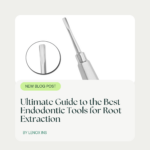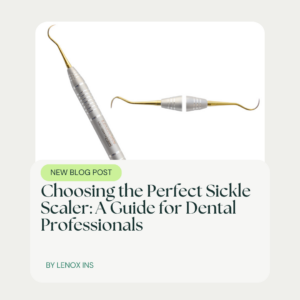Enhancing Dental Hygiene With Sickle Scaler Techniques
- LENOX INC CANADA
- October 8, 2024
- Periodontal
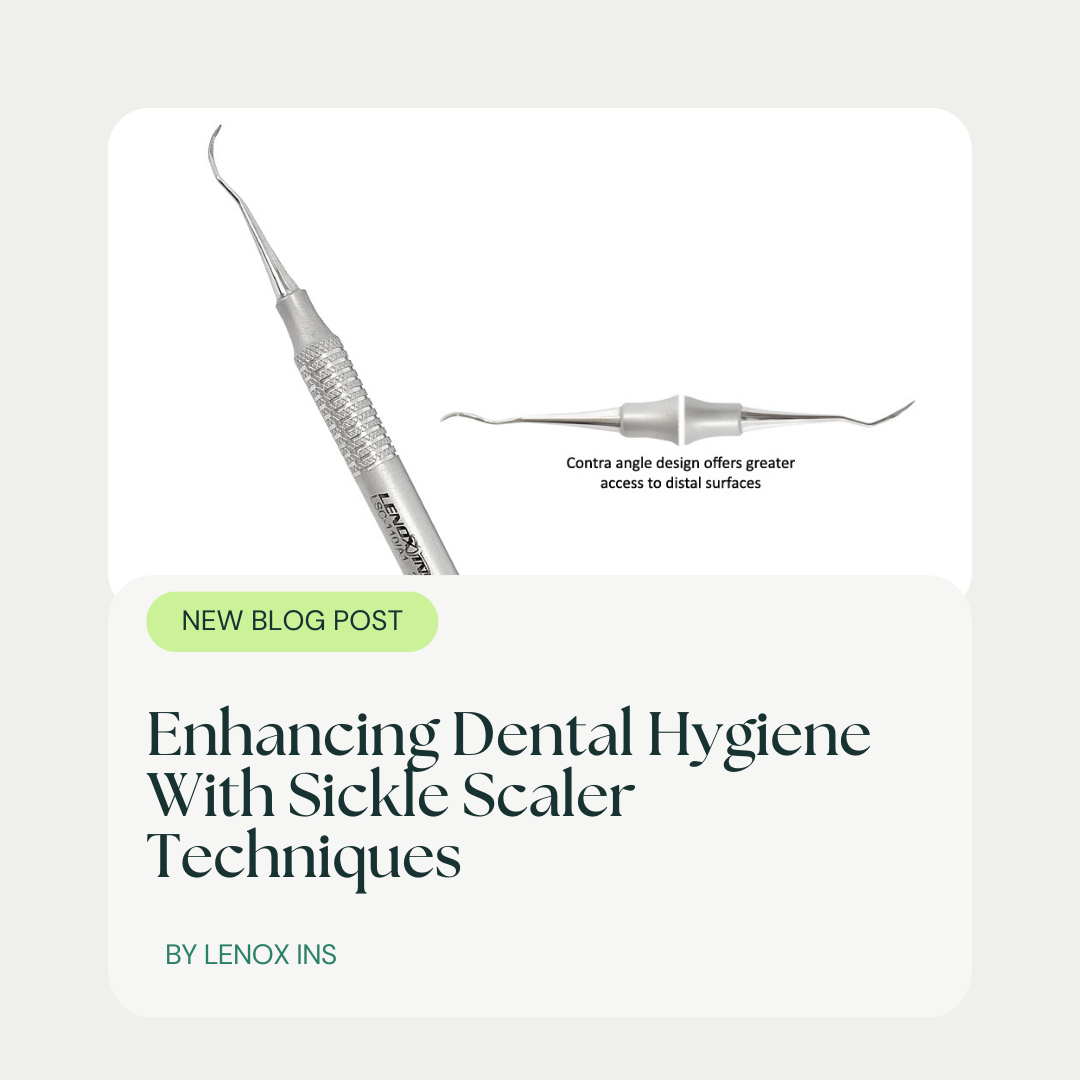
Many dental hygienists struggle with effectively removing dental plaque, leading to concerns about patient satisfaction and health. Mastering sickle scaler techniques can enhance dental hygiene by improving plaque removal efficiency. This article will explore the role of sickle scalers, provide a step-by-step guide for safe usage, and highlight common mistakes to avoid. By engaging with this content, dental professionals will gain practical skills that enhance their practice and improve patient outcomes.
Key Takeaways
- sickle scalers are designed for effective plaque removal in hard-to-reach dental areas
- proper sterilization of sickle scalers is essential for patient safety and hygiene
- ergonomic handles on sickle scalers enhance control and reduce practitioner fatigue
- customizing techniques for patients with special needs improves comfort during dental procedures
- ongoing education helps dental professionals stay updated on best practices and innovations
Understanding the Role of Sickle Scalers in Dental Hygiene

Sickle scalers are essential tools in dental hygiene, characterized by their unique design that facilitates effective plaque removal. Understanding their features illuminates their benefits in preventing disease and infection. This section will examine how sickle scalers compare to other dental instruments, explore the various types available, and highlight the importance of proper sterilization techniques in maintaining dental health and ensuring patient safety.
Recognize the Features and Design of Sickle Scalers
Sickle scalers feature a distinctive, curved design that enables dental hygienists to efficiently remove plaque and calculus from tooth surfaces, particularly around the gingival margin. The sharp blades of these instruments facilitate precise scaling, making them invaluable tools in the fight against tooth decay. Additionally, the ergonomic handle allows for optimal finger placement, ensuring that practitioners can maintain control and comfort during use, which is especially beneficial in orthodontics where precision is critical.
Identify the Benefits of Using Sickle Scalers for Plaque Removal
Sickle scalers are valuable tools in dental hygiene, specifically designed for effective plaque removal. Their sharp blades and ergonomic handles enable dental professionals to target plaque and calculus effectively, particularly in areas difficult to reach, such as along the gingival margin. This precision helps reduce the risk of periodontal disease, ensuring that patients maintain optimal dental health and hygiene, while also facilitating easier cleaning during routine check-ups involving instruments like the dental cart and retractor.
Compare Sickle Scalers With Other Dental Instruments
Sickle scalers stand out when compared to other dental instruments, such as scalpels or extraction tools, due to their specific design tailored for plaque and calculus removal. While scalpels play a crucial role in surgical procedures, including dental extractions, sickle scalers excel in cleaning hard-to-reach areas around molars and beneath the crown, promoting better oral hygiene. Their effectiveness in managing plaque, especially near the tongue and gingival margins, positions sickle scalers as indispensable for dental professionals seeking to enhance patient care and reduce the risk of periodontal disease.
Learn About the Types of Sickle Scalers Available
Dental professionals utilize various types of sickle scalers, each designed for specific tasks in dental hygiene. Some scalers feature pointed tips ideal for accessing tight spaces between teeth, while others have a hoe shape for effective scraping along the tooth surfaces. By understanding the different designs and their applications, practitioners can enhance their techniques for plaque removal and improve patient outcomes, ensuring a thorough cleaning process that often complements the use of dental floss.
With an understanding of sickle scalers and their vital role, the next step is to learn how to use them effectively. Mastering the proper techniques will ensure cleaner teeth and healthier smiles.
Mastering Proper Sickle Scaler Techniques for Effective Cleaning

Preparing the oral cavity for scaling procedures is essential for effective teeth cleaning. Proper positioning of the sickle scaler ensures optimal results, while applying the right amount of pressure during scaling enhances plaque removal. Additionally, maintaining ergonomic posture reduces practitioner fatigue. Finally, implementing post-scaling care is crucial for patient recovery. Each of these factors contributes significantly to successful dental hygiene practices.
Prepare the Oral Cavity for Scaling Procedures
Preparing the oral cavity for scaling procedures involves several essential steps to ensure effective cleaning and patient comfort. Before using sickle scalers, dental professionals should ensure the tissue is adequately examined, identifying any inflammation or sensitivity, especially around the anterior teeth. Administering anesthesia, if necessary, can help minimize discomfort and anxiety during scaling, creating a more relaxed environment for patients who may be fearful due to previous surgery experiences. Additionally, reinforcing the importance of tooth brushing before the appointment can help reduce plaque buildup, facilitating a smoother scaling process.
Position the Sickle Scaler Correctly for Optimal Results
Positioning the sickle scaler at the correct angle is crucial for optimal results during scaling and root planing. Dental hygienists should hold the stainless steel instrument at approximately 70 to 80 degrees relative to the tooth surface. This angle enhances the effectiveness of the scaler, particularly on premolar areas, allowing for precise plaque removal and facilitating better cleaning in those hard-to-reach spots, especially when using the chisel technique for more efficient scraping.
- Ensure proper angle for effectiveness.
- Utilize stainless steel instruments for durability.
- Focus on premolar areas to minimize plaque retention.
- Employ chisel techniques for thorough cleaning.
Apply the Appropriate Amount of Pressure During Scaling
Applying the appropriate amount of pressure while using a sickle scaler is crucial for effective cleaning and ensuring patient safety. Excessive force can lead to gum tissue damage, particularly around sensitive areas like the posterior teeth. Conversely, inadequate pressure may not effectively remove plaque buildup, especially following procedures such as a sinus lift, leaving patients at risk for periodontal issues. Practitioners should continuously assess their technique to maintain optimal pressure during the scaling process.
| Aspect | Consideration |
|---|---|
| Pressure Level | Moderate pressure is ideal to prevent tissue damage. |
| Instrument | Use a sickle scaler for effective plaque removal. |
| Target Areas | Focus on posterior teeth for comprehensive cleaning. |
| Post-Procedure Care | Monitor for sensitivity after treatments like sinus lift. |
Maintain Ergonomic Posture to Reduce Practitioner Fatigue
Maintaining an ergonomic posture is essential for dental professionals during procedures involving sickle scalers, especially when considering the impact on their health and efficiency. Properly positioning oneself minimizes strain on the back, neck, and shoulders, which can lead to fatigue over time, particularly during lengthy sessions of endodontics or when using forceps. Practitioners should align their bodies to ensure optimal comfort and control while scaling, making it easier to reach all areas of the mouth, including the sensitive gums and lip regions, ultimately supporting effective oral hygiene practices.
| Posture Considerations | Actions for Improvement |
|---|---|
| Back Position | Maintain a neutral spine while seated. |
| Neck Alignment | Keep the head aligned with the spine to prevent strain. |
| Leg Position | Feet flat on the ground for stability. |
| Instrument Grip | Use a relaxed grip on the sickle scaler and forceps. |
Implement Post-Scaling Care for Patients
Implementing effective post-scaling care is vital for maintaining good dental hygiene and ensuring patient comfort following procedures involving sickle scalers. Dental professionals should educate patients about possible sensitivity or discomfort that may occur after scaling, particularly around areas treated with composite material or during dental surgical procedures. Recommendations for proper home care, such as avoiding hard foods and maintaining a soft diet for a day or two, can significantly enhance recovery and overall oral health.
| Post-Scaling Care Aspect | Recommendations |
|---|---|
| Sensitivity Management | Inform patients about potential sensitivity, especially near treated areas. |
| Diet Considerations | Advise a soft diet for one to two days post-procedure. |
| Home Care | Encourage regular brushing with a soft-bristled toothbrush. |
| Follow-Up | Schedule follow-up appointments to monitor healing. |
Mastering the techniques of sickle scalers is only part of the journey. Knowing how to select the right tool for various dental needs can significantly enhance the effectiveness of the work.
Selecting the Right Sickle Scaler for Various Dental Needs
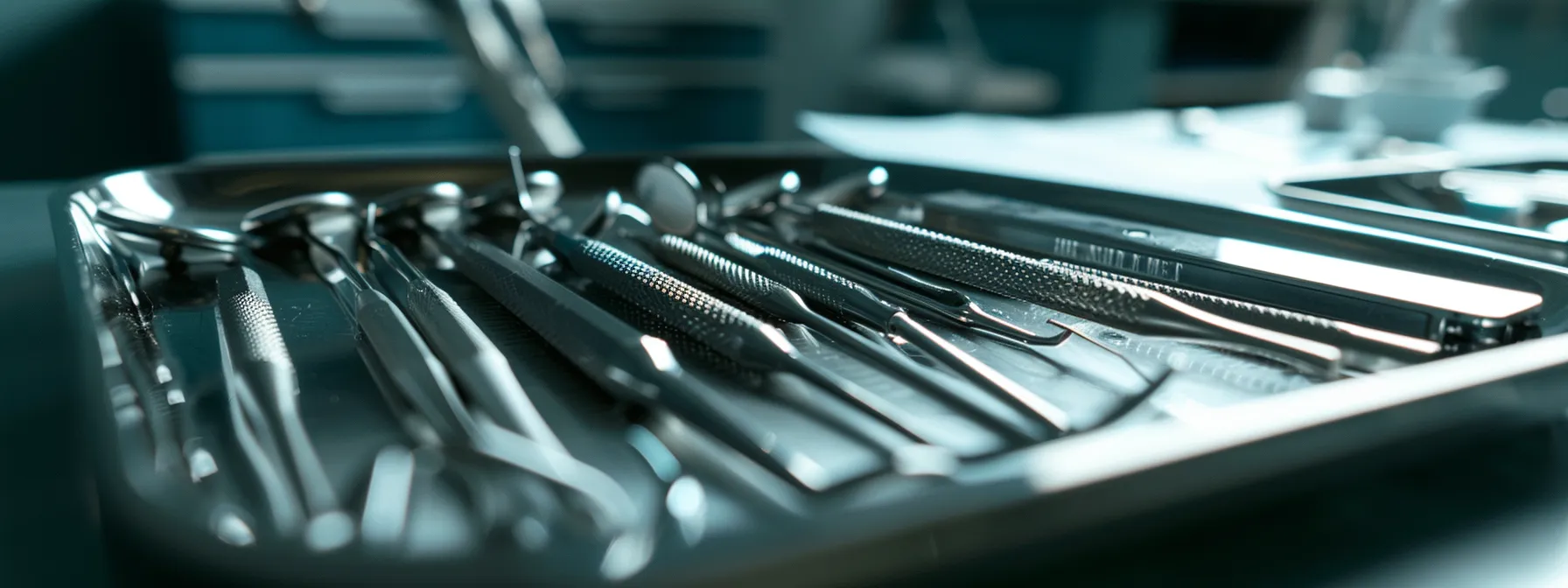
Selecting the right sickle scaler is crucial for effective calculus removal and overall dental hygiene. This section will address how to assess a patient‘s oral health conditions, choose between anterior and posterior sickle scalers, decide on single-ended versus double-ended instruments, and consider handle design for comfort and control. Each factor plays a significant role in enhancing dental hygiene practices.
Assess Patient's Oral Health Conditions
Assessing a patient‘s oral health conditions is fundamental when selecting the appropriate sickle scaler for effective cleaning. Dental professionals should conduct a thorough examination to identify factors such as plaque accumulation, gum sensitivity, and the overall condition of the teeth. For example, a patient with significant calculus buildup may require a sickle scaler with a specific blade design that can efficiently reach challenging areas while minimizing discomfort. This targeted approach not only enhances patient care but also ensures that the instruments used are best suited for individual needs, ultimately contributing to improved dental hygiene outcomes.
Choose Between Anterior and Posterior Sickle Scalers
Choosing between anterior and posterior sickle scalers is a critical decision for dental professionals aiming to enhance oral hygiene. Anterior scalers are typically designed with narrow blades to effectively clean the teeth at the front of the mouth, where accessibility can be more challenging. In contrast, posterior scalers are often wider and have a different angle, making them more suitable for addressing plaque and calculus on the back teeth, which can accumulate substantial buildup due to their location. Selecting the appropriate scaler type based on the patient‘s specific dental needs ensures thorough cleaning and helps prevent periodontal issues.
Decide on Single-Ended vs. Double-Ended Instruments
When selecting between single-ended and double-ended sickle scalers, dental professionals must consider the specific needs of their patients and the types of procedures being performed. Single-ended instruments offer precise control and are particularly effective for targeted scaling in tight spaces, making them ideal for anterior teeth. On the other hand, double-ended scalers feature two distinct working ends, allowing practitioners to switch between different blade types without needing to exchange instruments, ultimately enhancing efficiency during cleanings and reducing the time spent per patient. By assessing the specific oral conditions and treatment plans, dental hygienists can choose the most appropriate scaler type to optimize plaque removal and patient comfort.
Consider Handle Design for Comfort and Control
The handle design of a sickle scaler plays a crucial role in ensuring comfort and control during dental hygiene procedures. Ergonomic handles allow hygienists to maintain a firm grip, reducing hand fatigue and improving precision while scaling. For instance, handles that have a textured surface can enhance traction, enabling the practitioner to navigate challenging areas effectively, ultimately leading to better plaque removal and improved patient care.
Choosing the right sickle scaler is just the beginning. Next, it is crucial to learn how to use these tools safely and effectively to ensure the best care for patients.
Step-by-Step Guide to Using Sickle Scalers Safely and Effectively

Effective use of sickle scalers begins with conducting a comprehensive oral examination to identify areas needing attention. Following stringent sterilization protocols before use is essential for patient safety. Practitioners must then execute proper scaling techniques on different tooth surfaces to ensure thorough plaque removal. Finally, evaluating the effectiveness of scaling post-procedure confirms optimal results and enhances overall dental hygiene.
Conduct a Comprehensive Oral Examination
Conducting a comprehensive oral examination is a fundamental step in enhancing dental hygiene with sickle scaler techniques. Dental professionals assess the patient‘s teeth and gums for signs of plaque accumulation, calculus build-up, and any underlying issues that may affect scaling efficacy. This initial evaluation helps tailor the scaling approach to individual needs, ensuring targeted and effective cleaning, which is essential for preventing periodontal disease and promoting optimal oral health.
Follow Sterilization Protocols Before Use
Following strict sterilization protocols before using sickle scalers is essential to ensure patient safety and effective dental hygiene practices. Dental professionals must thoroughly clean and sterilize these instruments to eliminate any potential pathogens, thereby reducing the risk of cross-contamination. Utilizing autoclaves for proper sterilization not only enhances the safety of procedures but also instills confidence in patients about their care and treatment:
- Clean instruments post-use to remove debris.
- Use autoclaves for effective sterilization.
- Store sterilized instruments in a clean environment.
- Regularly check equipment and protocols for compliance.
Execute Proper Scaling Techniques on Different Tooth Surfaces
Executing proper scaling techniques with sickle scalers on different tooth surfaces requires attention to detail and a systematic approach. Dental professionals should begin with the anterior surfaces, positioning the scaler at an angle of about 70 to 80 degrees to effectively eliminate plaque without damaging the gum tissue. For posterior teeth, practitioners should adjust their technique to accommodate the broader surface area, applying consistent but gentle pressure to thoroughly clean these hard-to-reach spots, ensuring a comprehensive, patient-centered dental hygiene experience.
Evaluate the Effectiveness of Scaling Post-Procedure
Evaluating the effectiveness of scaling post-procedure is essential for ensuring optimal dental hygiene and patient satisfaction. Dental professionals should conduct a thorough examination of the treated areas to assess plaque removal and observe any signs of gum sensitivity. This process allows practitioners to identify areas that may require additional attention, ensuring that patients leave with clean teeth and a comprehensive understanding of their dental health, ultimately reinforcing the importance of regular visits for maintaining oral hygiene.
Using sickle scalers well means knowing what to avoid. Next, the reader will learn about the common mistakes that can lead to mishaps and how to steer clear of them.
Avoiding Common Mistakes When Using Sickle Scalers

Avoiding common mistakes when using sickle scalers is crucial for enhancing dental hygiene. Practitioners should be mindful of excessive force, which can damage enamel, and ensure correct angulation to facilitate effective scaling. Additionally, recognizing signs of instrument wear and addressing patient comfort promptly are essential for optimal results. Each of these considerations contributes significantly to successful scaling techniques and improved patient outcomes.
Prevent Excessive Force That Can Damage Enamel
Excessive force when using sickle scalers can lead to significant enamel damage, which compromises a patient’s dental health. It is essential for dental professionals to apply moderate pressure during scaling to effectively remove plaque without harming the tooth surface. Practitioners should continuously monitor their technique, ensuring that they adjust their pressure based on the condition of the enamel and the presence of any underlying sensitivity, ultimately safeguarding the patient‘s dental integrity and promoting better long-term oral hygiene outcomes.
Avoid Incorrect Angulation Leading to Ineffective Scaling
Correct angulation is crucial when using sickle scalers to ensure effective plaque removal. When the scaler is positioned incorrectly, it may not effectively contact the tooth surface, leading to inadequate cleaning and potential periodontal issues. For instance, positioning the scaler at an angle that deviates from the recommended 70 to 80 degrees can hinder access to tight spaces, reducing the overall effectiveness of the scaling process and compromising the patient’s oral health. Dental professionals must prioritize proper angulation to enhance patient outcomes and maintain optimal dental hygiene practices.
Recognize Signs of Instrument Wear and Replace When Necessary
Recognizing signs of instrument wear is critical for maintaining effective dental hygiene practices with sickle scalers. Dental professionals should routinely inspect scalers for dullness, chips, or irregularities in the blade, as these can impact their ability to remove plaque and calculus efficiently. When wear is evident, timely replacement is essential not only to ensure optimal performance but also to protect patient safety and comfort during procedures.
Ensure Patient Comfort and Address Feedback Promptly
Ensuring patient comfort during dental procedures is paramount for effective sickle scaler techniques. Dental professionals should actively engage with patients, seeking feedback about discomfort or sensitivity during scaling. By promptly addressing any concerns, practitioners can adjust their approach, fostering a positive experience and encouraging patients to communicate openly about their needs:
- Inquire about patient comfort levels throughout the procedure.
- Adjust scaling pressure based on patient feedback.
- Provide clear instructions on post-scaling care to enhance recovery.
Mistakes can hinder progress, but they also point the way to improvement. By refining skills and exploring advanced techniques, practitioners can elevate their use of sickle scalers, unlocking new levels of precision and effectiveness.
Advancing Skills With Sickle Scaler Techniques
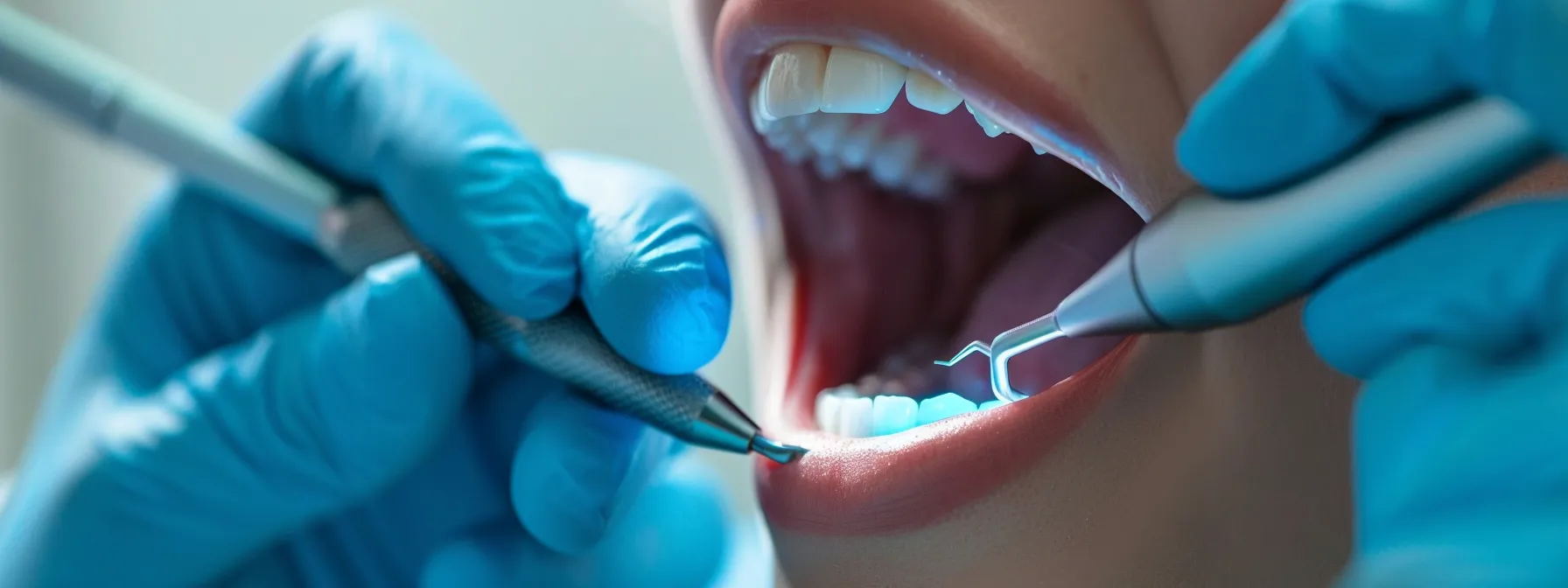
Advancing skills with sickle scaler techniques involves integrating ultrasonic scaling with manual methods to enhance overall dental hygiene. Practitioners should also customize their techniques for patients with special needs, ensuring effective cleaning while maintaining comfort. Staying updated on innovations in sickle scaler design is essential for optimizing results, and participating in continuing education fosters ongoing skill enhancement.
Integrate Ultrasonic Scaling With Manual Methods
Integrating ultrasonic scaling with manual methods allows dental hygienists to enhance their approach to plaque removal and patient care. Utilizing ultrasonic devices can effectively break down stubborn calculus, making it easier for hygienists to follow up with sickle scalers for precision cleaning in hard-to-reach areas. This combined technique not only improves efficiency during procedures but also minimizes patient discomfort, providing a comprehensive solution to maintaining optimal dental hygiene.
Customize Techniques for Patients With Special Needs
Customized techniques for patients with special needs are essential for effective dental hygiene using sickle scalers. Dental professionals must assess each patient‘s unique requirements, such as cognitive or physical limitations, and adjust their scaling methods accordingly. For instance, employing slower, more deliberate movements can help reduce patient anxiety, while using specialized tools designed for comfort can ensure effective plaque removal without causing discomfort, ultimately leading to a more positive dental experience for vulnerable populations.
Stay Updated on Innovations in Sickle Scaler Design
Keeping abreast of innovations in sickle scaler design is imperative for dental professionals aiming to enhance dental hygiene practices. Advances in materials and ergonomics, such as lightweight composites and contoured handles, can significantly improve control and reduce hand fatigue during scaling procedures. By integrating the latest technologies, practitioners can provide more effective plaque removal while ensuring patient comfort and safety.
| Innovation Aspect | Impact on Dental Hygiene |
|---|---|
| Material Upgrades | Enhances instrument durability and effectiveness. |
| Ergonomic Design | Reduces hand fatigue and improves control. |
| Technological Integration | Supports efficient plaque removal and patient comfort. |
Participate in Continuing Education for Skill Enhancement
Participating in continuing education is crucial for dental professionals aiming to advance their skills with sickle scaler techniques. By attending workshops, seminars, and courses specifically focused on the latest innovations and best practices in dental hygiene, practitioners can deepen their understanding of effective plaque removal methods and patient care strategies. These educational opportunities not only enhance expertise but also empower dental hygienists to apply new techniques that contribute to improved patient outcomes and overall dental health.
- Importance of ongoing education for skill development.
- Access to workshops and seminars on sickle scaler techniques.
- Enhancement of patient care and hygiene practices.
Conclusion
Enhancing dental hygiene with sickle scaler techniques is vital for effective plaque and calculus removal, directly contributing to improved oral health and reduced risk of periodontal disease. Practitioners must master proper positioning, appropriate pressure, and ergonomic practices to optimize patient comfort and treatment outcomes. By selecting the right scalers and staying informed about advancements in dental tools, professionals can elevate their care standards. Ultimately, integrating these techniques into daily practice fosters better patient experiences and promotes lasting oral health.


